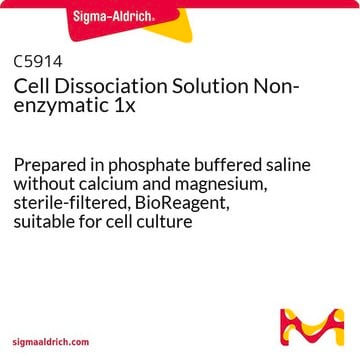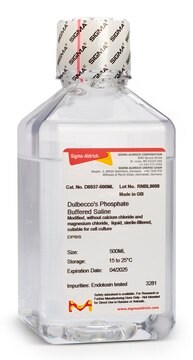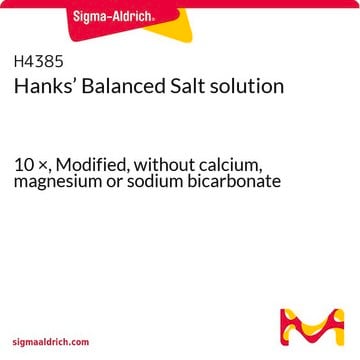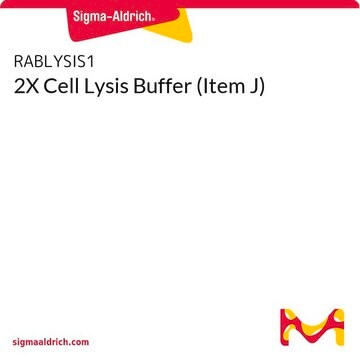This product contains EDTA as the major active component, which acts as a chelating agent for divalent cations to loosen cell–cell contacts but does not break down the extracellular matrix as trypsin does. Empirical testing is needed to determine if this approach is more effective. It is highly recommended to review the literature to determine if an EDTA-only dissociation method has been successfully used with the particular primary microglia preparation protocol.
C5789
Cell Dissociation Solution Non-enzymatic 1x
Prepared in Hanks′ Balanced Salt Solution without calcium and magnesium, sterile-filtered, BioReagent, suitable for cell culture
Sinonimo/i:
Cell Dissociation Reagent
Scegli un formato
About This Item
Prodotti consigliati
Livello qualitativo
Sterilità
sterile-filtered
Nome Commerciale
BioReagent
Stato
solution
Concentrazione
1 ×
tecniche
cell culture | mammalian: suitable
pH
6.5-7.5
Condizioni di spedizione
wet ice
Temperatura di conservazione
room temp
Cerchi prodotti simili? Visita Guida al confronto tra prodotti
Descrizione generale
Applicazioni
Supplemento
Codice della classe di stoccaggio
12 - Non Combustible Liquids
Classe di pericolosità dell'acqua (WGK)
WGK 1
Scegli una delle versioni più recenti:
Possiedi già questo prodotto?
I documenti relativi ai prodotti acquistati recentemente sono disponibili nell’Archivio dei documenti.
I clienti hanno visto anche
-
Hi, I am working with primary microglia and it very tricky to dissociate. I usually dissociate them with 0.5% Trypsin for 7 min at 37˚C and still hard to collect them. May I know whether this reagent would be a better alternative? Thank you!
1 answer-
Helpful?
-
-
What is the concentration of EDTA in Cat#C5789? Thanks
1 answer-
The concentration of EDTA in this formulation is proprietary. Additional components include Sodium Citrate, Nitrilotriacetic Acid, and Glycerol in Hank's Balanced Salt solution. Should the concentration of EDTA be required, product E8008, EDTA 0.2% in DPBS, may be of interest. Both items are tested for cell dissociation. Please see the link below to review this product option:
https://www.sigmaaldrich.com/US/en/product/sigma/e8008Helpful?
-
Active Filters
Il team dei nostri ricercatori vanta grande esperienza in tutte le aree della ricerca quali Life Science, scienza dei materiali, sintesi chimica, cromatografia, discipline analitiche, ecc..
Contatta l'Assistenza Tecnica.












